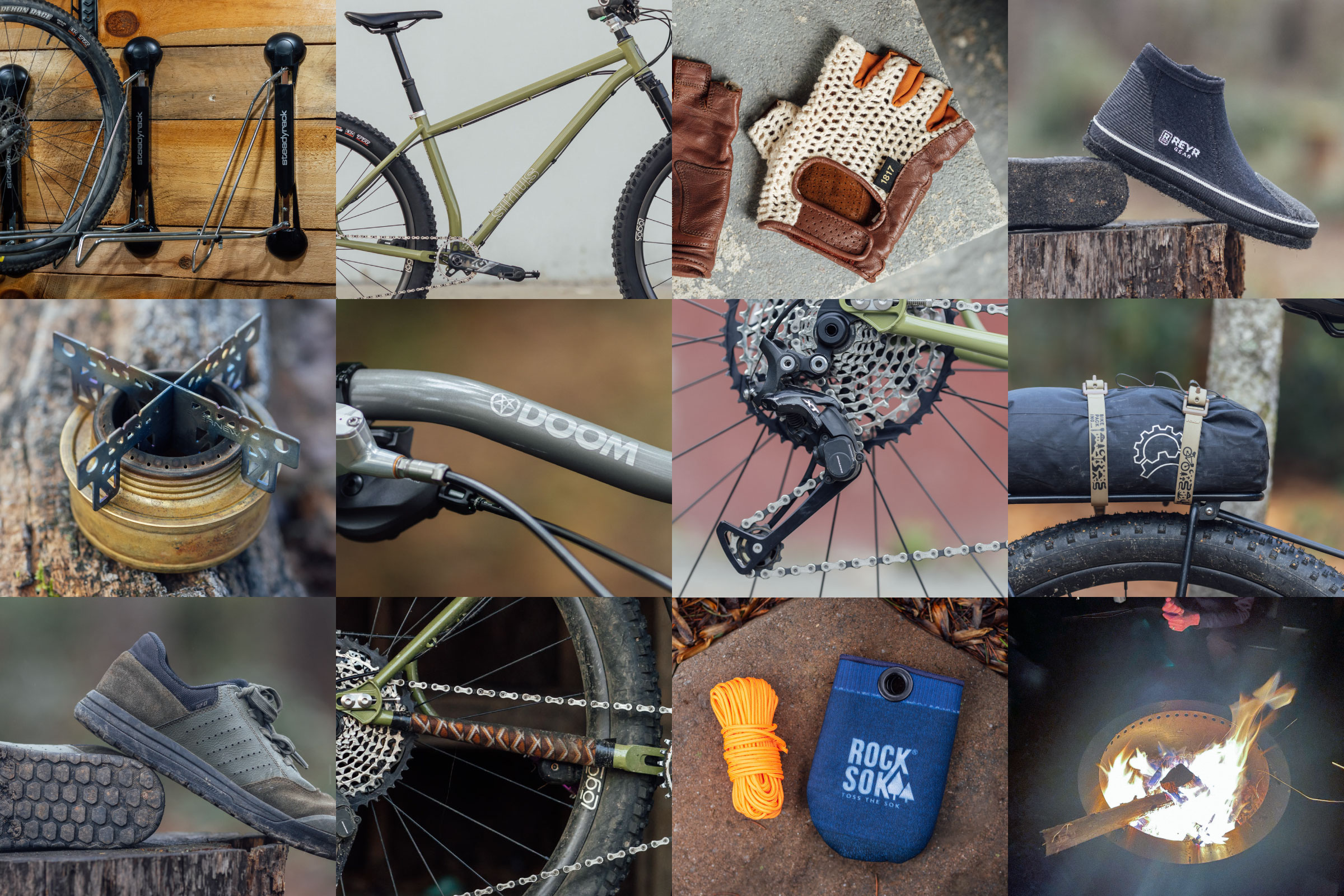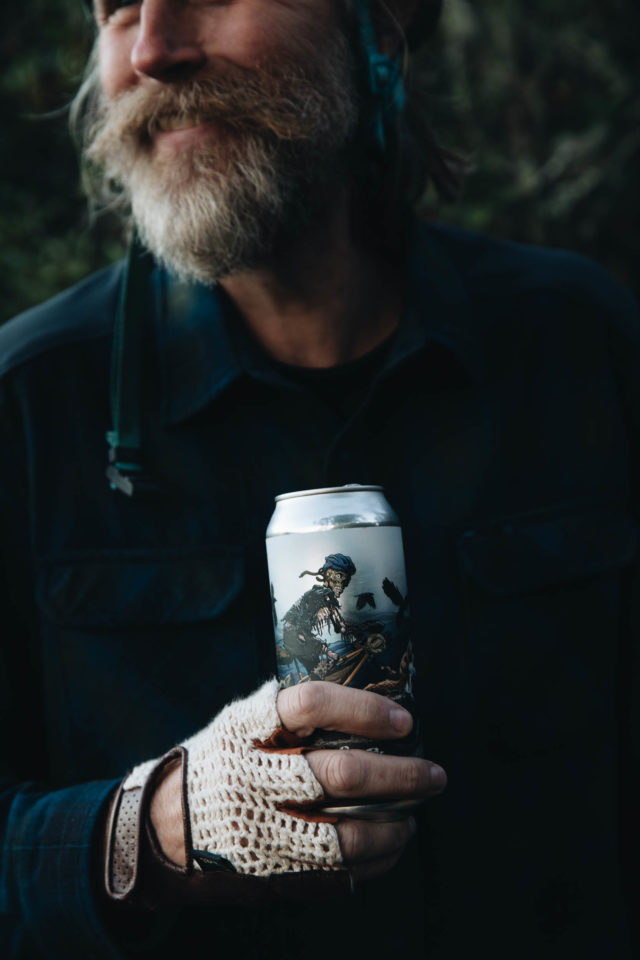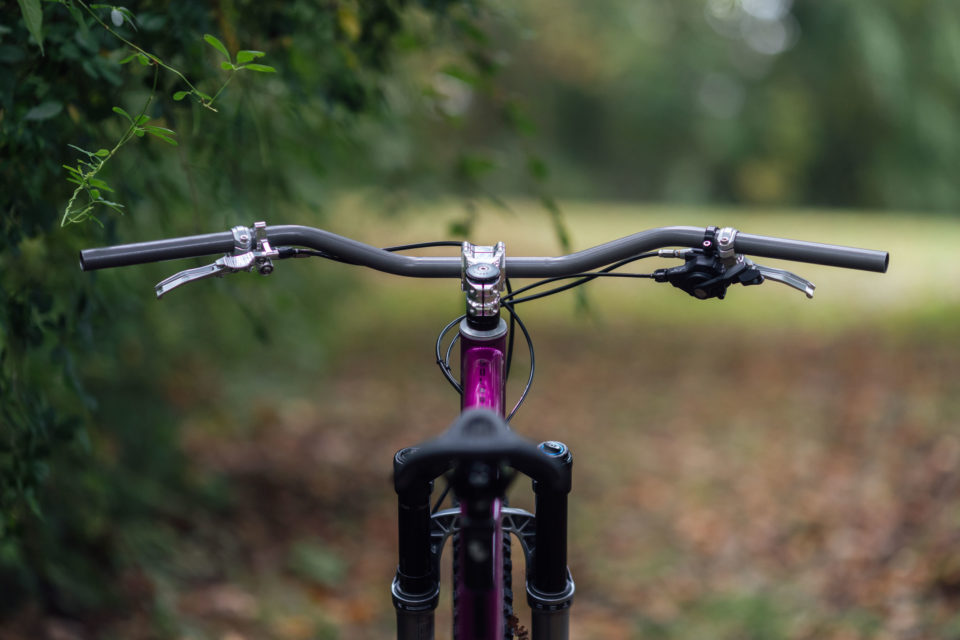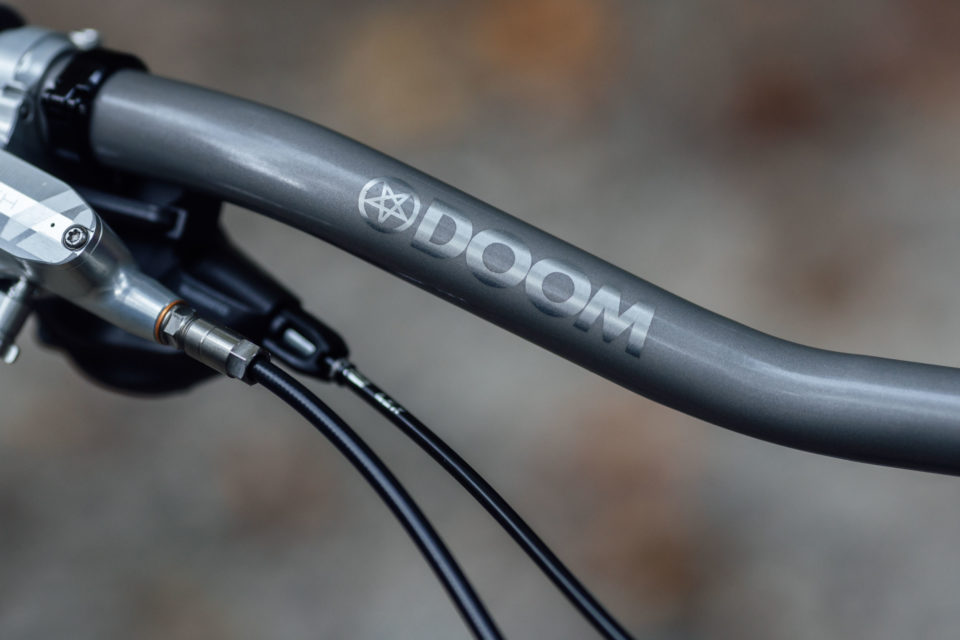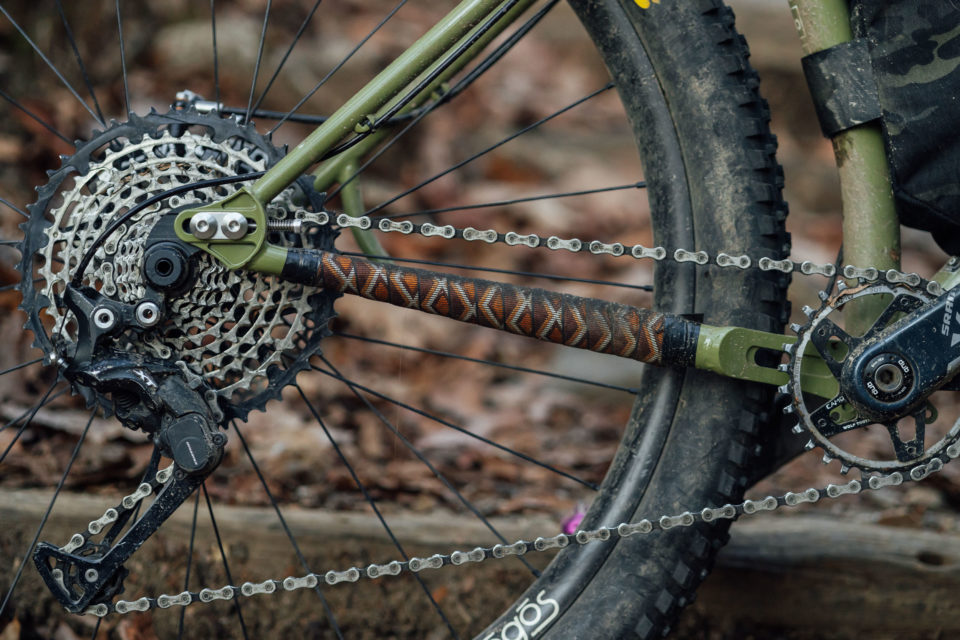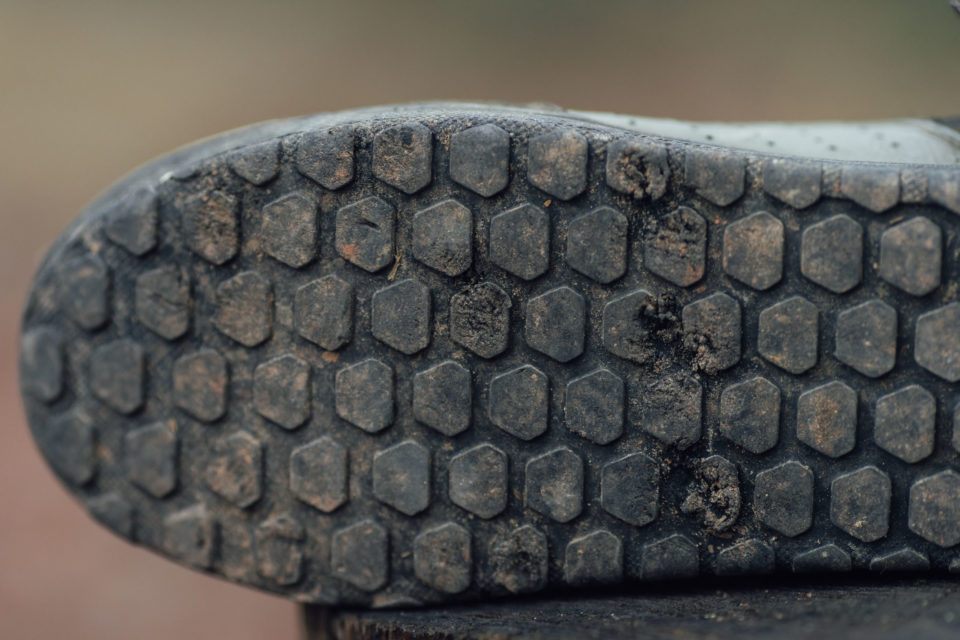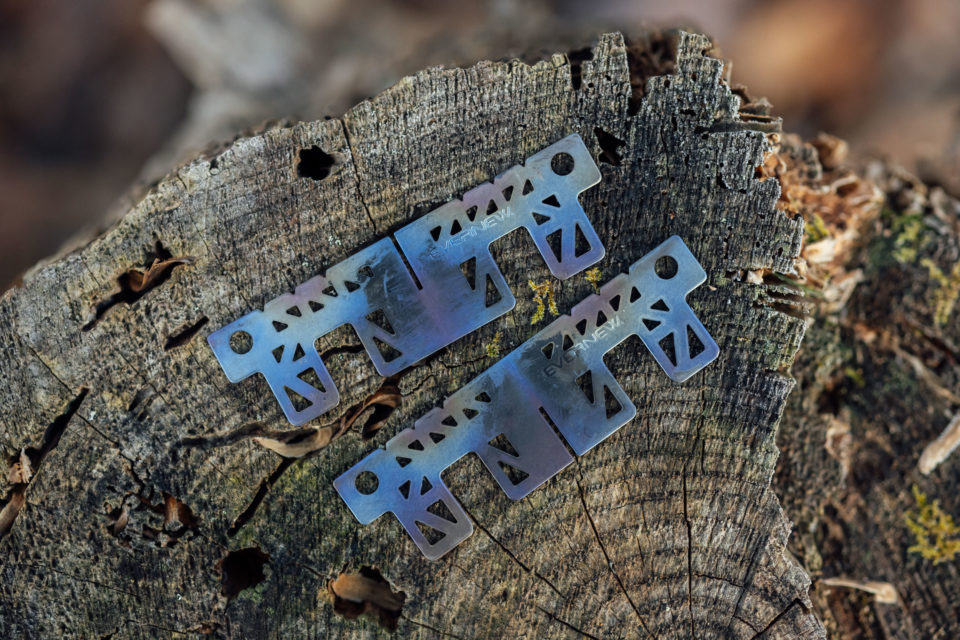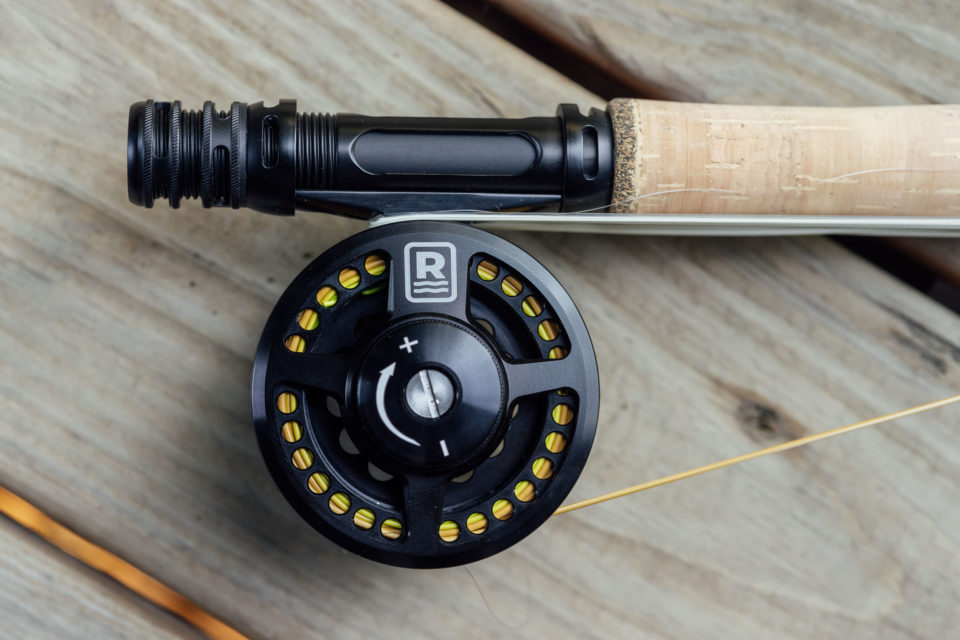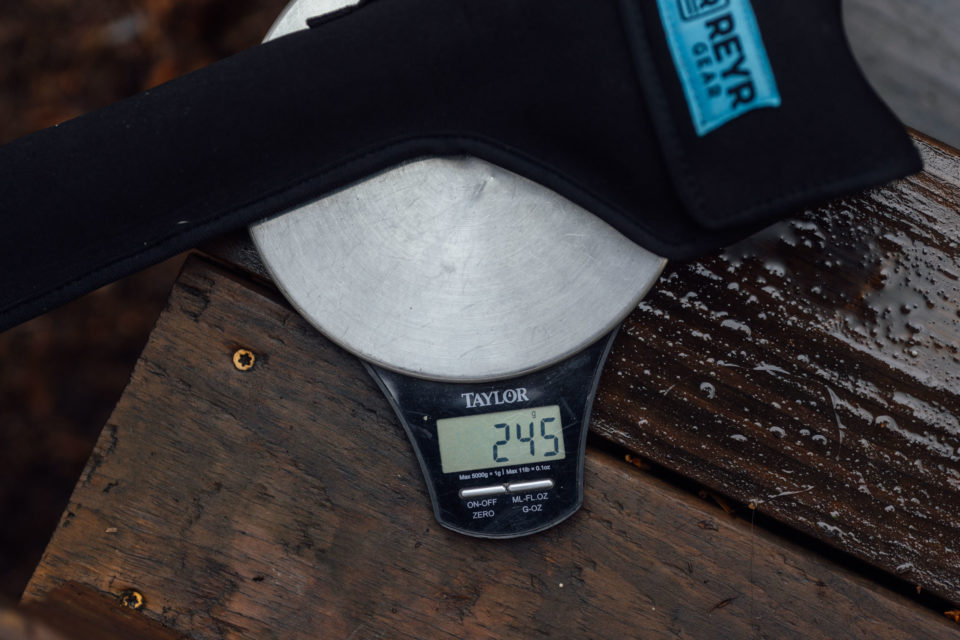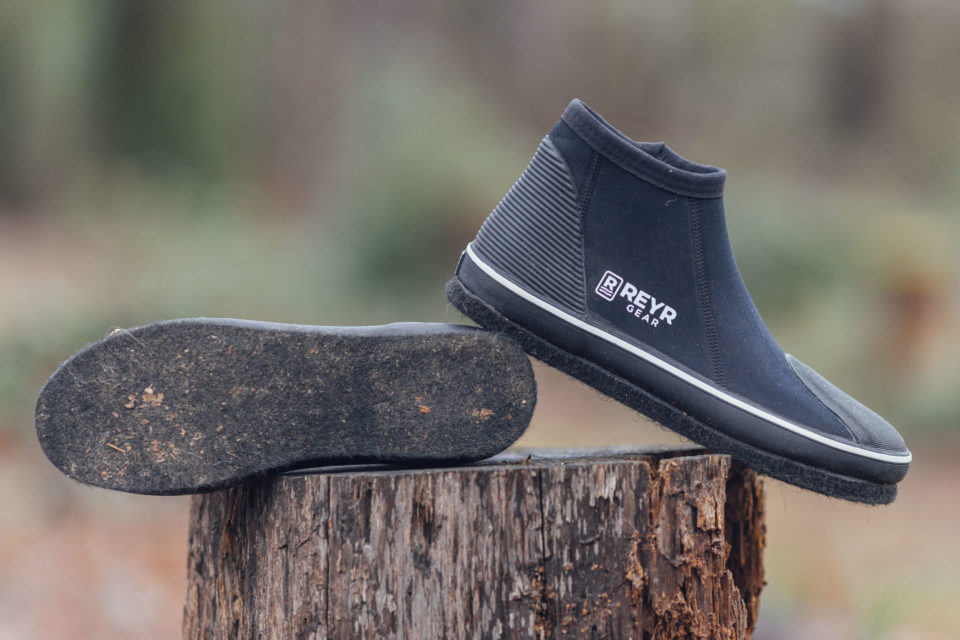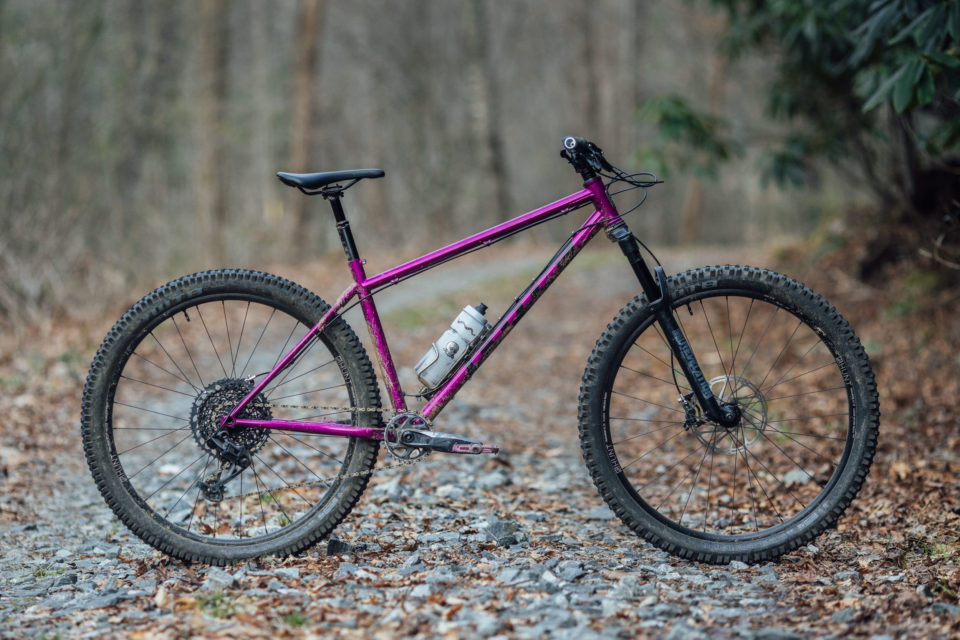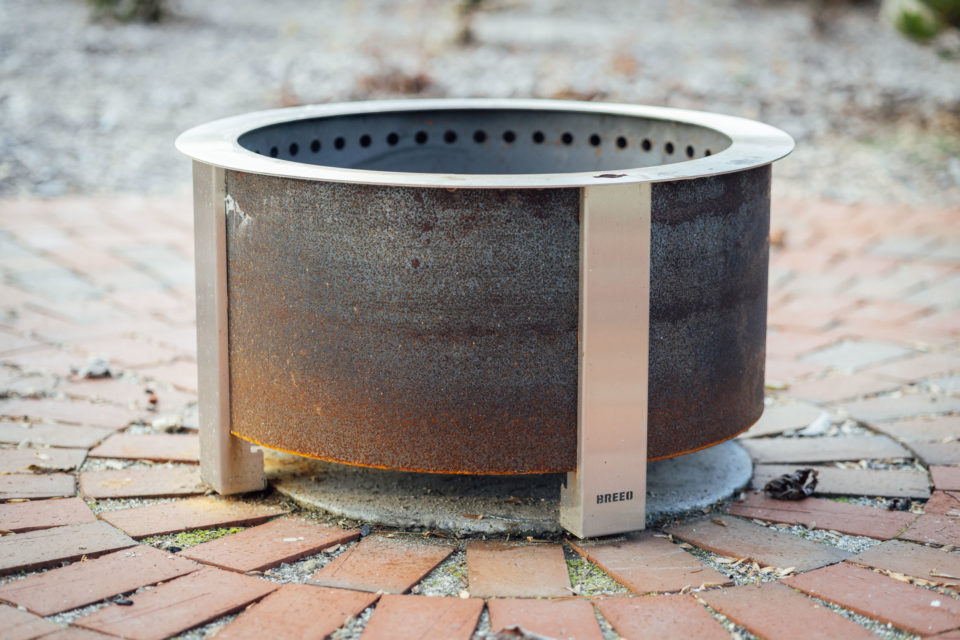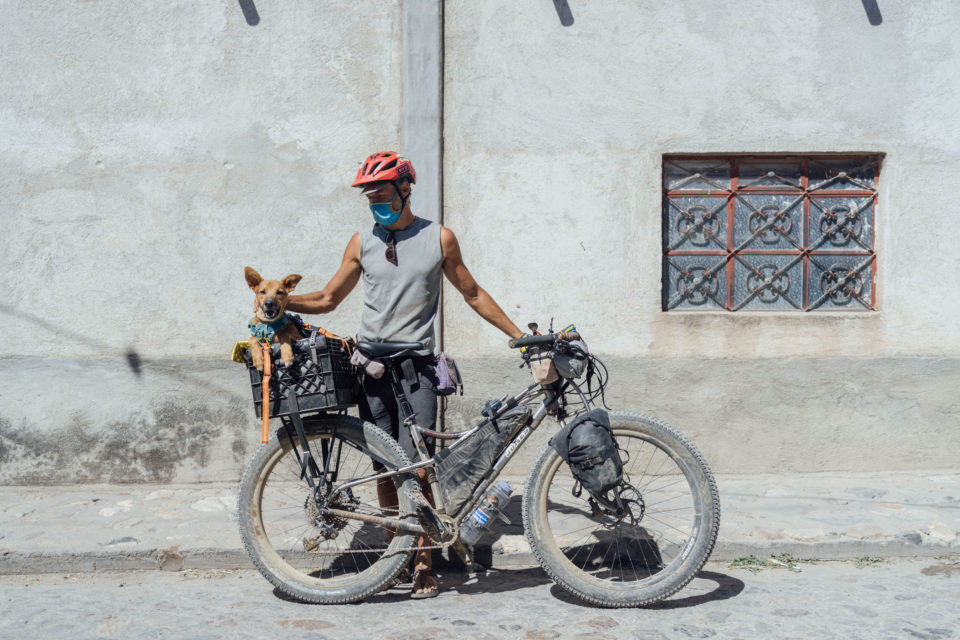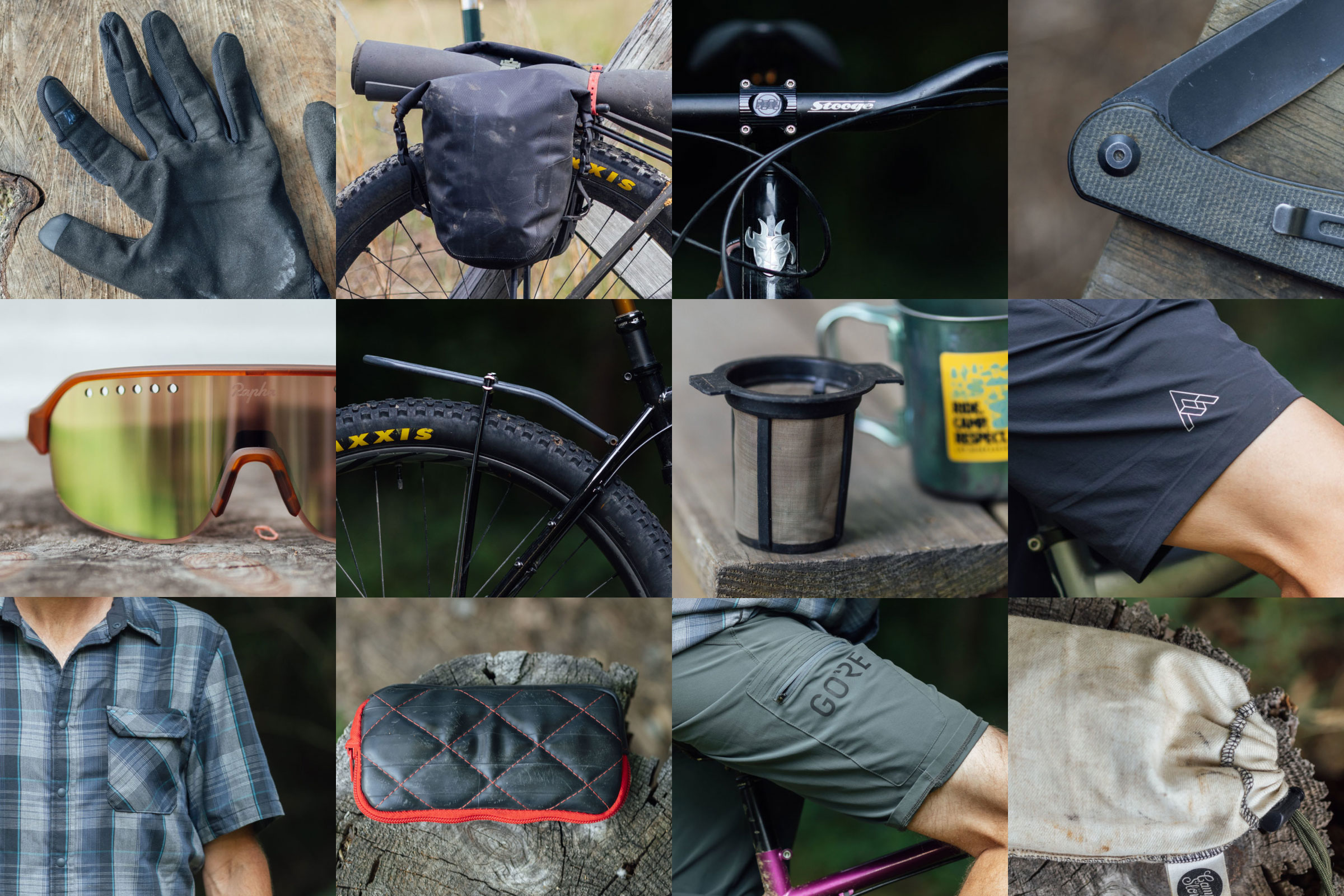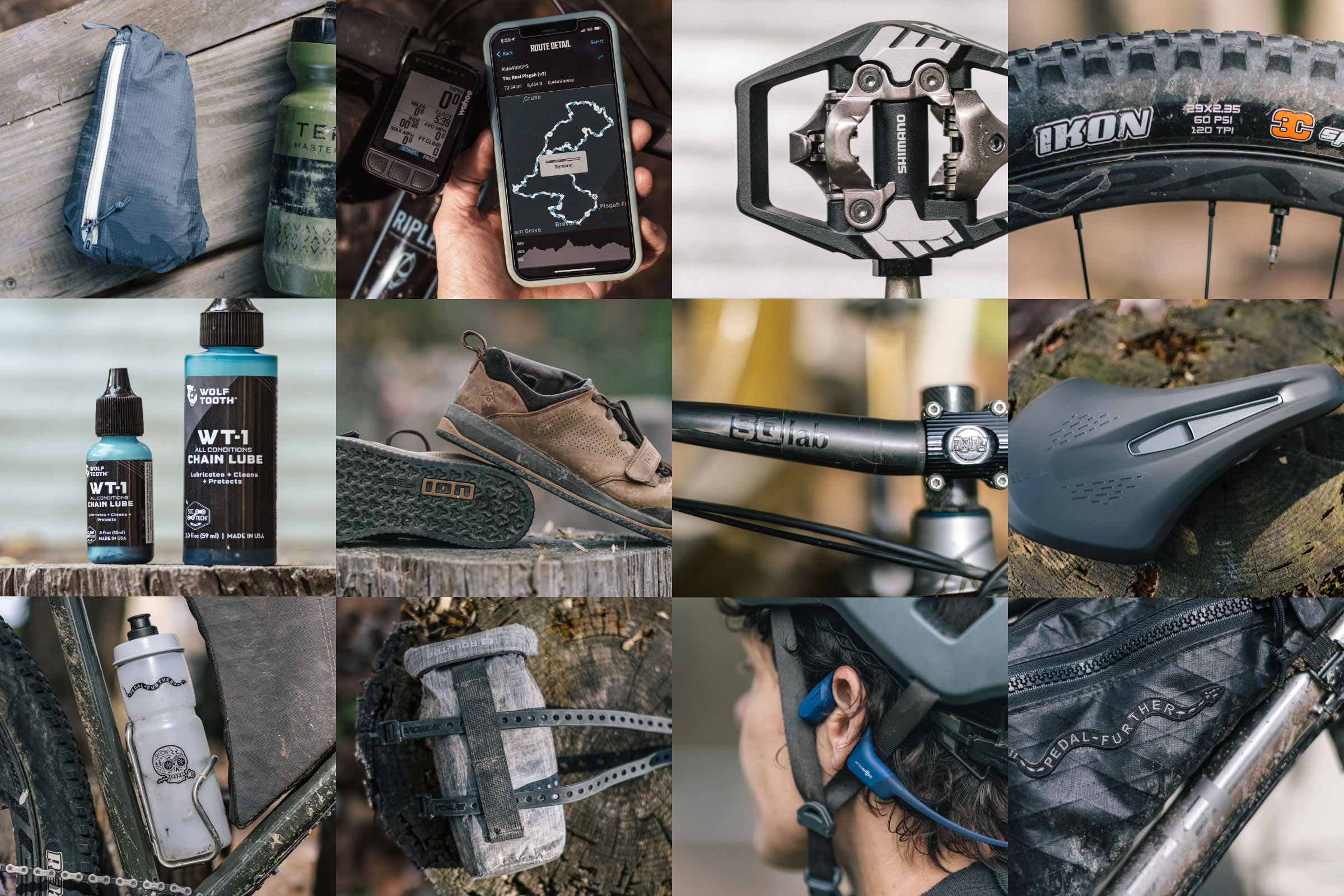Editor’s Dozen: Logan and VA’s Favorite Gear of 2022
Share This
Continuing the time-honored tradition of sharing our favorite gear each year, Logan and Virginia round up a dozen prized items. All 12 of these products saw heavy use and impressed us in 2022, a year of Baja Divide riding, Eastern Divide route scouting, chunky trail rides in the Sierra Norte and the Appalachians, and posh overnighters in the forest…
Many of the products Virginia and I tried throughout the past 12 months made it into the 2022 Gear of the Year awards, so you might think we wouldn’t have enough items to round out a full dozen. On the contrary, there were still a number of interesting pieces of gear left on the table that we’ve come to appreciate over the past year.
To preface, we stayed on largely familiar turf for most of 2022, aside from our Baja Divide ride and rambles in the Oaxacan Sierra Norte at the beginning of the year. I also took off on a couple of big solo pulls to scout some remaining portions of the Eastern Divide Trail during the summer and fall. We tested a lot of new gear on all these rides throughout the year.
For this installment of the #editors-dozen series, we selected 12 items that saw a ton of use in 2022 and became near and dear in the process. Some of these items came out of retirement from pandemic-induced storage bins and dusted off to be re-appreciated in new ways. Others were new to the market this year. Find them all below.
PDW 1817 Gloves
50 grams / Made in TBD / $30 at Performance
The Portland Design Works 1817 Gloves pay homage to the early days of cycling. Why 1817, you might ask? German inventor Karl von Drais is credited with creating the first bicycle. His contraption, known as the “swiftwalker,” first hit the road in 1817 with no pedals and a wooden “top tube.” It was kind of an adult push-bike. Look it up. Aside from the significance of the name, I dug the aesthetic of these gloves and ordered a pair when they were released on our Debrief back in August.
The PDW 1817 gloves feature soft, durable leather palms and a breathable cotton crochet back. They’re plenty grippy once they break in, even when used with fabric bar wrap. And the open-air weave keeps your hands cool when it’s hot outside. I used them quite a bit when the weather was still warm, and they even made an appearance in the Burial Beer Co. collab photos. The 1817s are offered in four sizes with a black or white color scheme.
Doom Bars Bikepacker’s Delight
552 grams / Made in New Mexico / $185+ at Doom Bars
New Mexico-based Doom Bars has been on my radar ever since we first posted about them in 2021. I mean, c’mon, they’re a company that specializes in wide mountain bike bars and they’re named after one of my favorite breeds of heavy metal… and they have a pentagram as their logo. If that doesn’t make them a shoe-in, they also have a model called “Bikepacker’s Delight.” Icing on the cake. I bought one a few months ago for all of those reasons.
Doom Bars is pretty much a one-person shop run by Keaton Haire in bustling Albuquerque, New Mexico. Aside from some newer titanium models, Keaton hand bends all of Doom’s bars from 7/8” (22mm) diameter 4130 chromoly tubing. They can be mounted directly into 22.2mm BMX stems—or in my case, the 22.2mm PAUL Boxcar—or mounted to a standard 31.8mm stem using the included shims.
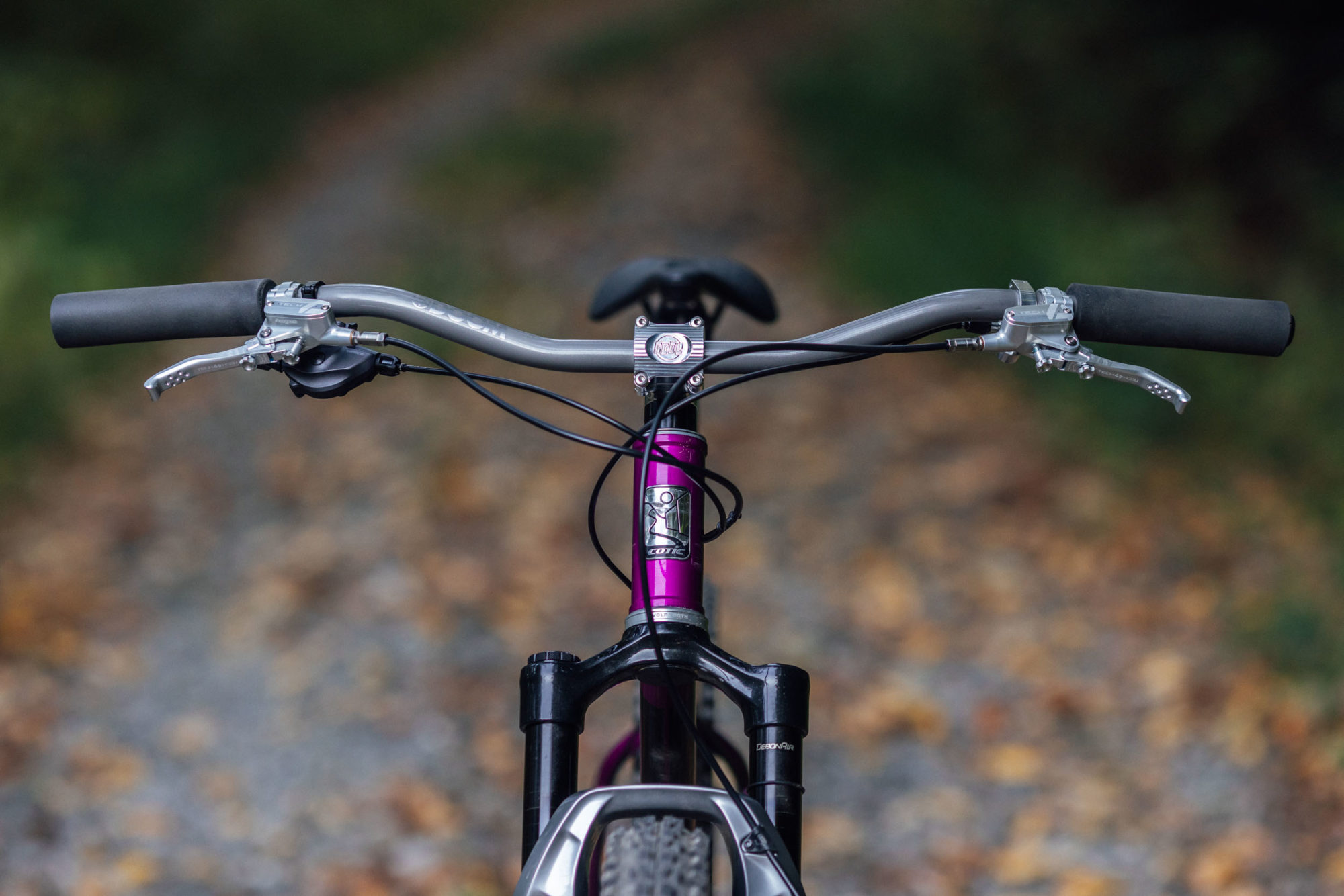
The Bikepacker’s Delight is one of Doom’s flagship models and has a moderate 19° backsweep and 38mm rise, which isn’t too extreme and doesn’t wreak havoc on bike fit. It’s built for long-ride comfort and has a 127mm (5”) wide stem clamp area specifically to accommodate bag straps. The Bikepacker’s Delight is a whopping 875mm wide (34.4”), but can be specified upon order to any particular width down to 780mm, which preserves a 185mm grip area. I had mine cut to 820mm, which is my personal sweet spot.
I really like the shape of these bars. It took a few tweaks before I found the angle I liked—which is rotated slightly down and back in relation to the stem—but once I got them dialed in, I found that they offer a nice comfortable position that doesn’t sacrifice control on the trails. Compared to similarly shaped aluminum bars, such as the Stooge Moto, they’re a little heavier, but the straight gauge 22.2mm steel tubing offers a uniquely sturdy feel with a tangible bit of full-bar flex. I tried them on a couple different bikes and really like them on my trail bike as that flex helps dampen the bigger hits. The Doom Bikepacker’s Delight comes in clear coated raw finish (as shown here), Endless Abyss Black Powdercoat, or nickel-plated.
Rock Sok Bear Line/Bag
66 grams (as shown) / Made in TBD / $35 at AMZN
I had a pretty jarring bear encounter back in 2014 as I was bikepacking the Virginia Mountain Bike Trail. It was my final night on the trail after a few big days, and I misjudged my food rations. After inhaling my last dehydrated meal, I realized I only had one Clif Bar remaining. That would have to be breakfast the next morning, and I hoped to make it into Damascus before completely bonking. The temperatures plummeted to around 20°F, and it started snowing. I was shivering in my 45° bag and decided to forego hanging my bear bag since it would have contained only one measly Clif Bar. Fast forward an hour, and I heard something big sniffing around the tent. I blew my emergency whistle as loud as possible in hopes that it would startle the creature. However, it didn’t run away, as expected. Instead, it made a growling huff noise and kept pacing at the front of the tent. I lay there still and scared, and luckily it eventually walked away into the cold night. Ever since that experience, I always properly tie up my food bag when camping in the Appalachians.
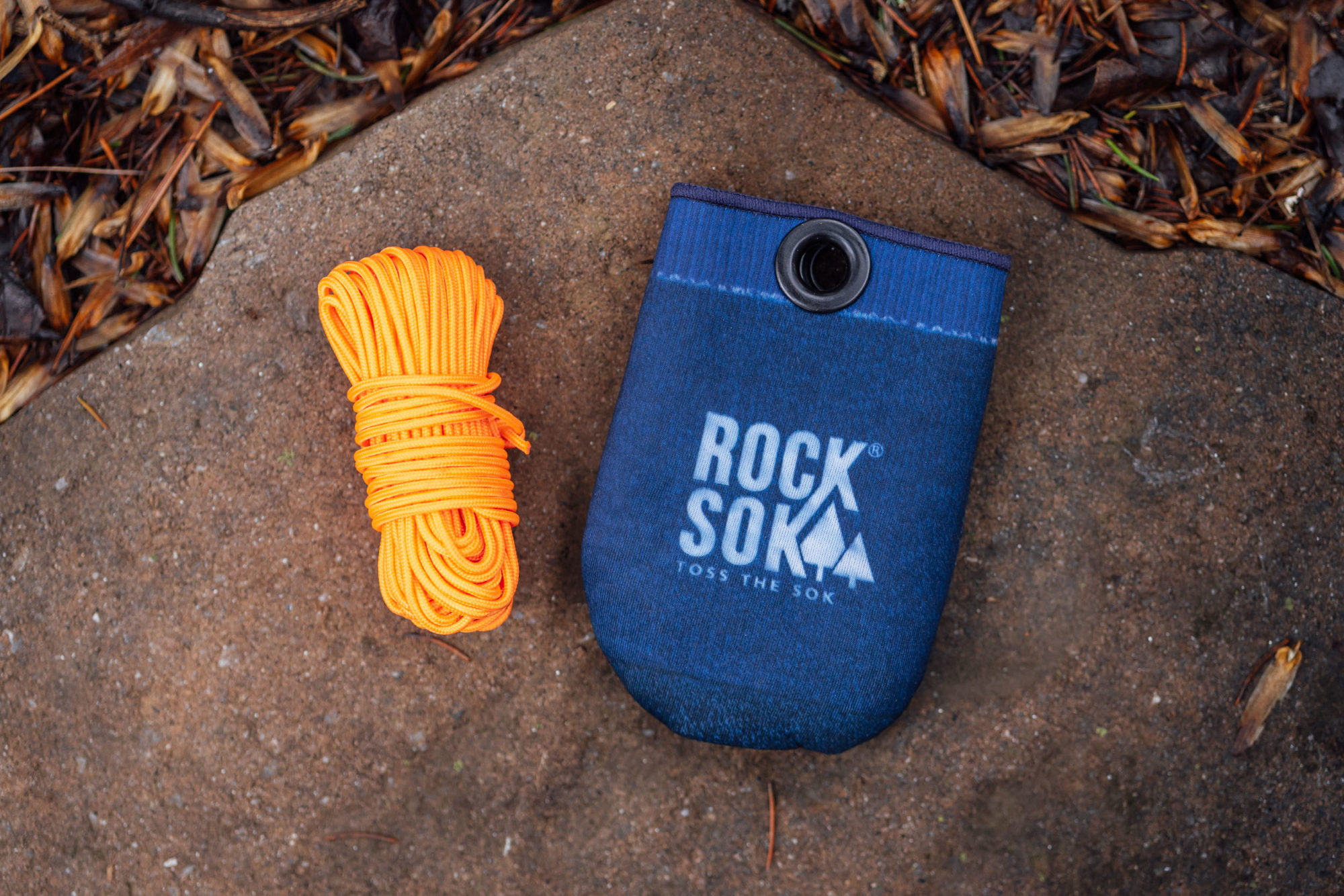
I usually just carry some heavy-duty cordage that I got from the hardware store and use whatever dry bag I’m carrying. However, Joe Cruz showed me the Rock Sok on a trip last fall. It’s a small neoprene bag that comes with two 36-foot ultralight neon paracord bundles, two carabiners, a dry bag, and an instruction booklet. We used it a couple of nights while scouting some options for the Eastern Divide Trail in New York. I really liked the ultralight, thin line and little bag that you could easily stuff with gravel and toss over a tree branch to hang up your food. It’s much easier than tying your cord to whatever stick or rock you can find laying around. I ended up buying one of my own and ditched everything but the neoprene sock and one cord (as shown above) for my regular bikepacking kit.
Rattlesnake Tape Remnants
As you may have seen on the site, I’m a sucker for CampAndGoSlow’s Rattlesnake bar tape. I love the look, and I’m not the first person to use it in ways other than what it was intended for. I think Cass may have been the first to wrap a chainstay with it. I followed suit this year and wrapped all three of the steel hardtails I have in my possession with some remnants I had lying around. Much more aesthetically pleasing than an old inner tube!
Specialized 2FO Roost Shoes
576 grams (pair, US9.6) / Made in China / $70 at Backcountry Jenson
If there’s one thing Specialized knows how to do well, it’s footwear. Several of their shoes have become long-term favorites, proving to perform well and be ultra-durable. An earlier iteration of 2FO clipless shoes we tested were bombproof, super comfortable, and ultimately some of the most hardwearing shoes we’ve ever tested. However, the first generation 2FO flats didn’t fare so well. The sole shredded to bits after one trip. The relatively new 2FO Roost Flat has a redesigned sole with third generation SlipNot rubber, so we were interested to see how it would perform and hold up.
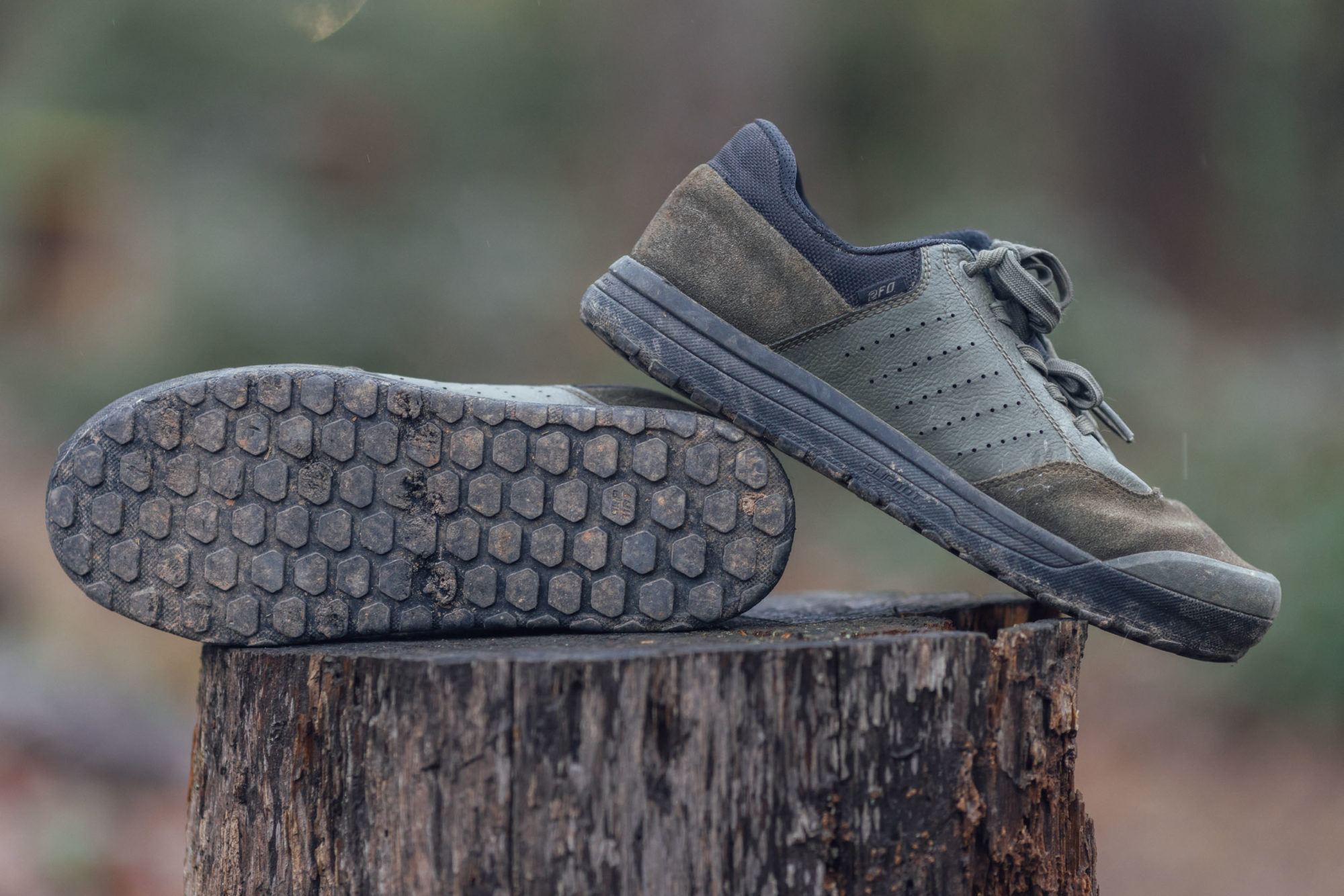
The new SlipNot rubber sole features a hexagonal lug pattern that Specialized claims directs pedal pins for a secure “locked-in” feeling and helps reduce overall wear off the bike. After a lot of use on trail rides and bikepacking trips, I can back both of these claims. The 2FO Roost is one of the better shoes I’ve tried in terms of pedal grip. It’s also held up surprisingly well. I put about 1,200 miles on this pair, give or take, including an eight-day bikepacking trip through Alabama and Florida that was highlighted by tornados and wading through swamps. The soles have some scars but are still in good working order. They’re also quite comfortable and have a medium-stiff sole that has a nice feel for long days of pedaling and didn’t cause any foot fatigue when pulling a couple of 100-mile days.
Evernew Cross Stand (+ Trangia Stove)
17 grams / Made in TBD / $14 for V1 or V2
We’re longtime devotees of the classic Trangia alcohol stove. It’s usually easy to find fuel for when traveling, it has an excellent simmer-friendly lid, it’s completely silent, and it burns even sub-par alcohol better than most other spirit burners. However, it requires accessories to act as a windscreen and/or hold a pot.
There are several great options, but one of our favorite combos is the Vargo aluminum folding windscreen, which doubles as a pot stand when simmering, and the Evernew Cross Stand. None of these items are new, either. In fact, we bought the Trangia who knows how many years ago and the Evernew Cross Stand in 2017. They’ve both been tested well enough to slot into the “gear that lasts” roundup too. However, we’ve yet to write about the Evernew Cross Stand on the site, and it came out of retirement and has been in heavy rotation this year. The Cross Stand is a simple, two-piece, ultralight titanium stand that slots together and sits in and on the stove to hold a pot for boiling water. It works perfectly for making coffee and weighs next to nothing. We took it back out on the Baja Divide and in Oaxaca early this year and remembered why we love it so much.
Reyr First Cast (4wt) & River Runners
Rod: 245 grams / $289 at AMZN Shoes: 526 grams / $59 at Reyr
I jumpstarted my old fly fishing hobby a few years ago when I was introduced to the bike-friendly Tenkara rod, finding a new interest in seeking out little-visited backcountry rivers and streams via bike. Reyr Gear’s innovative telescoping rods popped up on my radar soon thereafter, but I didn’t have a chance to give one a try until this past summer. Reyr’s flagship First Cast is a lightweight, telescoping rod/reel combo that quickly packs into a small one-piece bundle inside an included neoprene case. Lucky for me, the California-based company had just introduced a four-weight, seven-foot version of the First Cast, a great size and action-level for small and tight backcountry streams in the Appalachians. I had a chance to try it out over the summer.

What makes the Reyr First Cast unique is that the line is internally routed. So, when it collapses, the excess is wound around the front metal hook and the butt of the reel. In use, the Reyr First Cast 4wt rod is pretty impressive. Aside from the fact that it’s super light and packs down to a 16.5” package, what I love most about it is that you don’t have to remove the leader with the fly or dry-dropper setup as you do with a Tenkara or standard rod. In contrast, you just collapse it and wind it up. So when riding, you can just stop anywhere, quickly unfurl the rod and line, and try your luck on any spot on the river. It’s super quick.
From a performance perspective, the First Cast is pretty good. It’s obviously thicker than a normal light-action fly rod due to the internal line routing, but it does quite well. A couple of friends of mine reported that the heavier-weight versions are pretty stiff, so I’m happy to report that the 4wt version has a fairly nice, fast action and is plenty flickable for smaller rivers and creeks. I was able to throw the full 40-foot line out on a couple of occasions when fishing a big open pool, for what it’s worth.
Reyr also released the River Runner wading booties this year, which I also tried. And while these are an unexpected and niche choice for this roundup, I found them to be a game-changer. I usually fish in Bedrock Sandals, which are pretty good, as far as sandals go, but the felt-bottom River Runners offer excellent grip on our slippery moss-bottom streams. They also have a fair amount of ankle protection, which results in less battered and bruised feet after wading for a couple hours. In summary, at around a pound, these packable neoprene boots provide a lot of traction and protection for backcountry fly fishing and are pretty easy to carry in a medium-light bike setup.
British Steel Hardtails
I’ve become enamored with British-designed steel hardtails this year. I now have two in my shed, one of which I bought and the other I’m thinking about buying after I finish the review. I’m not sure if there’s something in the water over there, but there’s definitely a magical aspect to the geometry and tubing that’s coming from English bike brands. A couple of people have mentioned that Cotic’s founder Cy Turner should get some of the credit for this style of bike (see here). When first introduced in 2017, the company’s Longshot geometry was years ahead of its time, prioritizing added front-center length and shorter stems.
With that, timing might also have something to do with this perfection, or at least the magic I’ve found with these bikes. In short, Brits have been toying with “longer, low, and slack” before the rest of the bike industry adopted this recipe, so they’ve had time to let it simmer and perfect it over time. The two bikes pictured here seem to have dialed in the tubing selection and the geometry, and they’ve been eye-opening for me in 2022. That being said, they’re also completely different animals, despite being in the same “kingdom.” Stay tuned for more on this genre and a review of Pipdream’s S5 that I’m currently testing.
SteadyRack
Made in China / $90 at AMZN
The Rock Sok wasn’t the only other editor monkey-see-monkey-do product I procured this year. This summer, Neil bought a massive array of Steadyracks to organize his family bike collection, or should I say fleet. After he gave this product high marks in a review, I decided to do some reorganizing of my own.
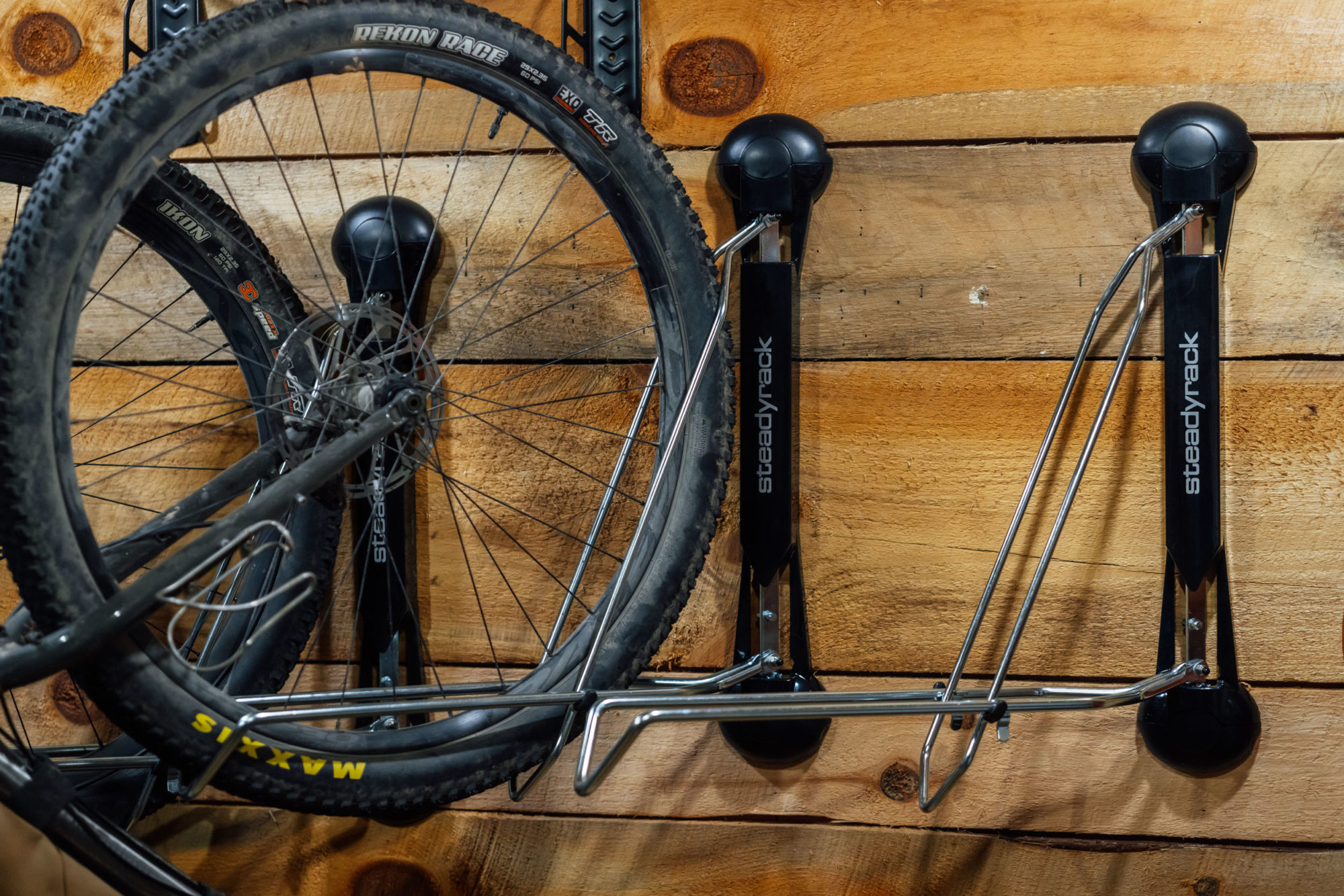
I bought five Steadyracks for my workshop and put two on one wall and three on another. They basically replaced a DIY three-bike floor rack I made from a reclaimed pallet. The great thing about Steadyracks is the fact that you can rotate the bikes in both directions, thus getting them out of the way of shelves and other storage and clearing floor space. They’re also pretty easy to roll your bike in and out of. Steadyracks aren’t cheap, but they made a huge difference in the shop organization for me and are definitely worth the investment. Thanks, Neil. Be sure to check out Neil’s full review here.
Revelate Polecat (as a Rack Bag)
109 grams / Made in China / $44 at REI Campfire
We reviewed the Polecat back in early 2019, so it’s nothing new for 2022. However, it’s held up for the long haul, and I found a new use for it: I’ve been using it as a rack-top pack this past year and really like it for this purpose.
The Revelate Polecat is an ultralight waterproof bag made specifically for fork-mounted cages. It has a volume of 3.5 liters with a packed diameter of 5.25″ wide x 4.5″ deep and a length of 8.5-12.5”. This long profile, coupled with an oval-esque diameter, gives it a nice shape for a rack-top bag too. Additionally, it has a tapered bottom that’s fitting as it provides some wiggle room for the saddle when a dropper post is fully engaged—this might be even more beneficial for smaller riders. Lastly, the urethane-coated daisy chain loops are great for keeping Voilé straps in place when lashed onto the rack.
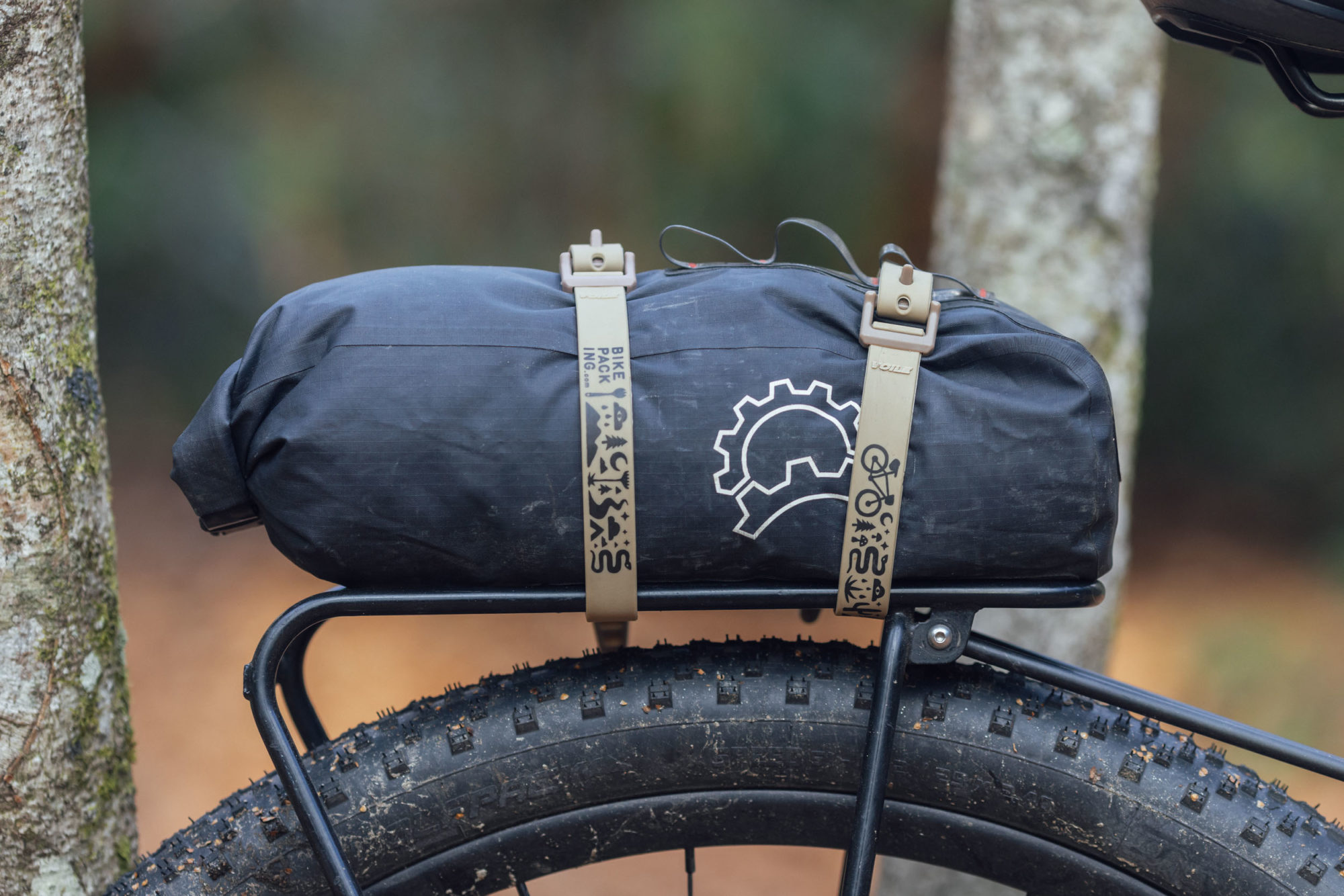
All that said, I secretly wish Revelate made a slightly larger version of the Polecat specifically for this purpose—the Perchcat, perhaps. It’s a great size for a full set of extra clothes, toiletries, and maybe a couple of other odds and ends, but a larger version would be super cool for a longer trip. Either way, the Polecat works pretty well as a rack bag, and I often pair it with another small item, such as my trusty Helinox Chair Zero.
Garbaruk 11-speed Cassette/Cage (XT)
320 grams / Made in Poland / $285 (kit) at Garbaruk
Somewhere amid the parts shortage, I went pretty deep in my parts bin for a couple of builds. I dug out the venerable XT derailleur I had used four or five years ago through Armenia and the Republic of Georgia and a Garbaruk 11-50T cassette and cage that I used for the popular Mullet Drivetrain roundup in 2020. In short, the in-house machined Garbaruk cage allows some Shimano 11/12-speed derailleurs to be converted to work with a 50T chainring.

After installing the cassette and cage and riding with it for months on a trail hardtail that I’ll be reviewing soon, it was a stark reminder that it’s pretty easy to put together a wide-range drivetrain that shifts beautifully, doesn’t break the bank, and is lighter weight than the latest and greatest 12-speed options on the market. For the record, the Garbaruk 11-50T cassette weighs 314 grams, which is 59 grams less than a comparable 10-50T X01 cassette. And with a decent 455% gear range, it’s not too shabby. Do we really need that extra gear? I think not.
Breeo X Series 24 Smokeless Fire Pit
Made in Pennsylvania / $599 at Breeo.co
This one is kind of left-field, so let me preface it by saying I’ve been a sucker for campfires ever since I can remember. Some of my first outdoors memories are with my grandparents around a campfire. Later, in high school, a few friends and I used to regularly head into the woods on school nights just to have a campfire for a couple of hours. Even now, there’s something special about the circle, the conversation, and the transient nature of it. However, I’ve also seen the impact that regular campfire use has in places where there are too many campers, and there are certain places in the backcountry where campfires aren’t ideal, particularly when they require gathering wood where it might have an impact on the ecosystem therein. With that, I’ve tried to cut back on campfires when I’m bikepacking. Not always, but I’m trying.
To maintain the addiction, Virginia and I decided to put a firepit in the backyard this year. After some research, we determined that a smokeless fire pit was the way to go. That way, we could have the occasional campfire in our backyard and not smell like a smokestack after the fact.
We did looked into it at length and weighed out the options from Solo Stove and Breeo. We ultimately landed on the made-in-Pennsylvania Breeo X Series 24 as an anniversary present to ourselves this year. It has great reviews, and we like the natural rust finish on the main body of the pit. It’s also fairly large and does an excellent job of burning wood efficiently and minimizing smoke. You can cook on the stainless steel ring, too, which is kind of fun. We love it.
Extra: Going Dogpacking (O.P.P.)
When we took off on a big bike tour back in 2012, we “loaned” our two dogs to Virginia’s parents. They refused to give them back to us after we kept leaving for various bike trips. Sadly enough, both Frank and Paco died over the last couple of years, and we’ve technically been dogless since 2012. It’s a wonder, since we’ve always been dog people. I suppose it makes it all the more of a joy to hang out with other people’s pups. Kind of like going on vacation.
That amped up in 2022, the first year we went dogpacking. Well, let me rephrase that, riding with dogpackers. Although, I did drive Cass’ Jones bike with Huesos in tow for 45 minutes or so. Either way, it’s a cool change of pace. Everything slows down to the dog’s schedule, and it adds a new perspective to the trip. I imagine it’s only a matter of time before we have a pedaling-friendly pooch of our own.
If you’re interested in purchasing any of these products, please support your local bike shop and buy from them when possible. If you can’t, or they’re only obtainable online, we’ve provided links to manufacturers and stores where they are currently available; some of these retailers offer a meager referral fee, which helps support this platform. This has no bearing on the review or selection.
Related Content
Make sure to dig into these related articles for more info...
Please keep the conversation civil, constructive, and inclusive, or your comment will be removed.






